SUSHI MADE SIMPLE
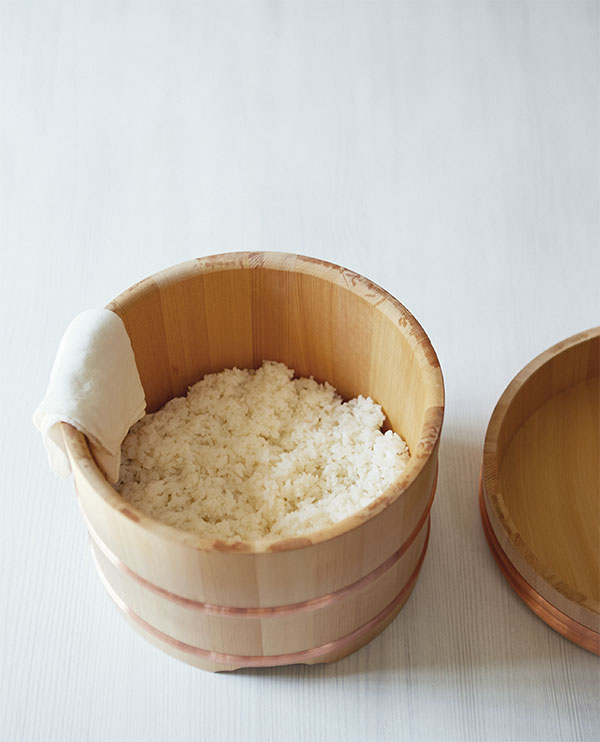

ATSUKO IKEDA SUSHI MADE SIMPLE From classic wraps and rolls to modern bowls and burgers Photography by YUKI SUGIURA

CONTENTS

With sushi restaurants opening and thriving in so many towns and cities, sushi has become an everyday food for many people. However, when you try to make something delicious at home that you have eaten in a restaurant, it can be difficult to work out how to do it properly and exactly which ingredients to use. With
Sushi Made Simple you will learn just how to do this. In this, my first book, I would like to share with you the traditional skills of sushi-making, teach you authentic but modern recipes and explain some aspects of Japanese culture too. I have been teaching Japanese cookery lessons for almost 10 years in Atsukos Kitchen my cooking school in London and sushi-making has always been one of my most popular classes. One of the things that surprises my students the most is how versatile sushi is: it can be quick and easy and perfect for a lunchbox, or more meticulous and time-consuming for a special occasion.
They all leave the course amazed at what they have accomplished. The secret to good sushi lies in its simplicity, and within this book I present new approaches to making sushi, with recipes using both traditional methods and techniques and modern variations. The book guides you step by step through the entire sushi-making process, from advising you on the essential tools to stocking your pantry and choosing ingredients. The basic techniques section shows you all the construction tricks, including preparing fish, cutting vegetables, cooking sushi rice and building the various types of sushi rolls. I was born on the Japanese island of Kyushu also known as the food island and I always loved food and cooking. My mother and grandmother were both good cooks and shared their knowledge with me.
However, it was only when I left Japan and spent most of a year sailing across the Atlantic to the Galapagos Islands that this passion took on a new dimension: we fished every day and I started to give cooking classes wherever we stopped to people who initially thought of Japanese cuisine as arduous and tricky. When I began teaching in London in 2008, I wanted to take away the mystery of Japanese cuisine and show that with knowledge, guidance and practice, it can be made by all. I have taught thousands of students who now cook Japanese meals and make sushi at home, even including my Italian husband Michele who I met in my class at the very beginning of my teaching career. It has become my lifetime mission! Enjoy the sushi journey throughout this book and I hope you will gain the confidence to experiment with your own sushi making. 
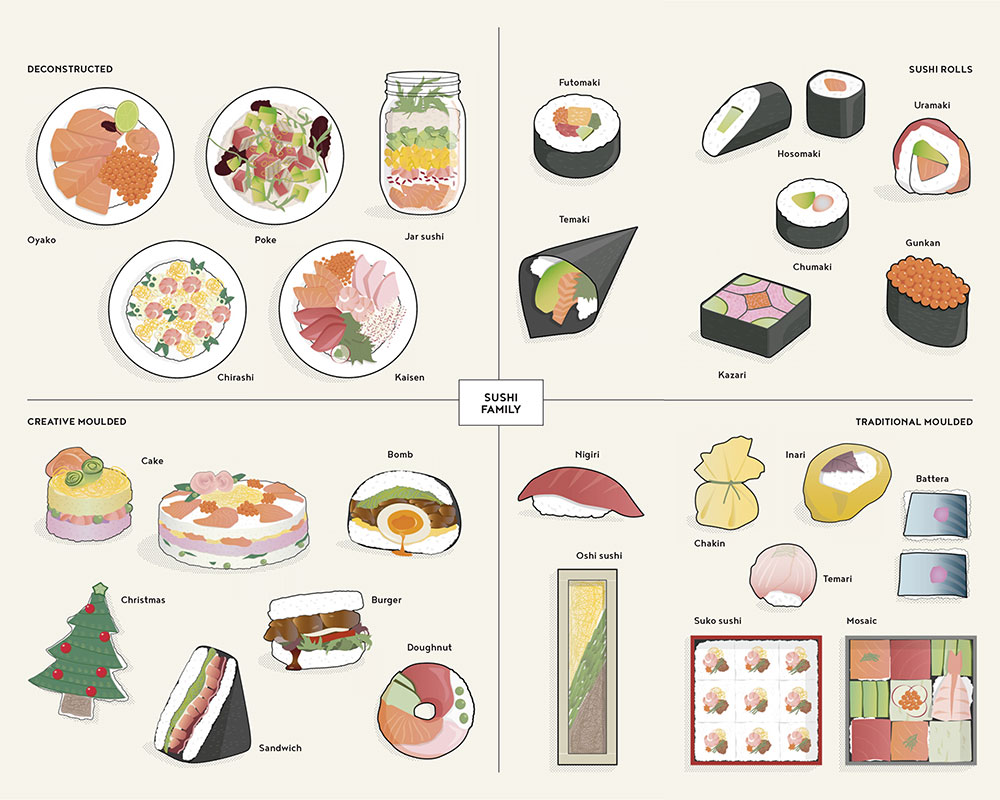 THE THREE SUSHI PRINCIPLES Finding the golden balance is paramount in making any dish. With sushi, you can create endless variations by combining sushi rice with different sorts of toppings or fillings.
THE THREE SUSHI PRINCIPLES Finding the golden balance is paramount in making any dish. With sushi, you can create endless variations by combining sushi rice with different sorts of toppings or fillings.
Bear in mind the following balance of three principles, as this will inspire ideas and make your sushi-making easy and successful! COLOUR BALANCE red, yellow, green, brown, white, black Eat with your eyes! Rainbow colours or matching colours work well visually and add nutritional value. And most of all, youll enjoy playing with colours when creating your sushi. FLAVOUR BALANCE sweet, sour, salty, bitter, umami, spicy Harmonise all these flavours in each mouthful for a satisfying meal. Different combinations of ingredients, and the choice of dipping sauces and other condiments, create the depth of flavours and the overall balance. Soy sauce and wasabi are probably the most well-known sauces and condiment, but there are plenty of others you can use. TEXTURE BALANCE crunchy, crisp, chewy, sticky, creamy, crumbly So many textures make for so many sushi possibilities! Even adding some crunchy toppings will change your sushi experience! Thanks to the growing popularity of sushi, specialist sushi-making tools and cookware are now much easier to buy.
Look in Japanese stores, cookware shops and online. SUSHI-MAKING TOOLS Wooden sushi mixing bowl This is used when mixing rice with sushi vinegar to make sushi rice or adding other ingredients to make mixed rice dishes, such as chirashi sushi. The wood helps to maintain the moisture level of the rice, absorbing any excess moisture. Before using, wet the surface of the bowl to prevent the rice sticking to it. The wide, shallow shape allows the rice to cool quickly and be evenly seasoned. Bamboo mat This is the must-have item for your sushi making, especially for creating rolled sushi and egg omelettes. Bamboo mat This is the must-have item for your sushi making, especially for creating rolled sushi and egg omelettes.
You will also need clingfilm (plastic wrap) for coating the mat, enabling you to roll inside-out rolls. Once you have used the mat, clean the surface and allow to dry thoroughly before storing. If grains of rice have become stuck in the mat, soak the mat in water to soften them and clean it with a fine brush, like a toothbrush. Plastic mats are also available. Grater The Japanese grater is designed a little differently to its European version. Instead of holes, it has fine raised spikes which allow the grated ingredient to remain on the surface of the grater.
This allows fresh wasabi, ginger, garlic and radish to be turned into a brilliantly fine paste. Once you have tried using this grater, it will become an essential tool in your kitchen. Peeler You probably already have a peeler in your kitchen, but Japanese ones are the best. They are used for peeling carrots and asparagus, and also for thinly slicing cucumber and courgette (zucchini) for sushi rolls. There are other variations designed for cutting vegetables into julienne or matchsticks. Brush This is used for brushing the sauce on nigiri sushi.
Rather than using a spoon or other tools, the brush can give an elegant glaze to the food. A pastry brush made with natural bristles makes a good alternative. Cooking chopsticks Using chopsticks for cooking Japanese food is very practical. They can be used for stirring, beating eggs, and so on. They are also useful for serving and adding the garnish toppings to sushi. Sashimi knife (yanagiba) A sharp knife is essential to good sushi. Sashimi knife (yanagiba) A sharp knife is essential to good sushi.
This long, slim knife is used for sashimi, or slicing fish fillets for sushi (see the knife tips on ). The blades are carbon steel, so wipe and dry after every use. Round and square moulds Used for moulding sushi cakes and sandwiches, and other creative and modern styles of sushi. 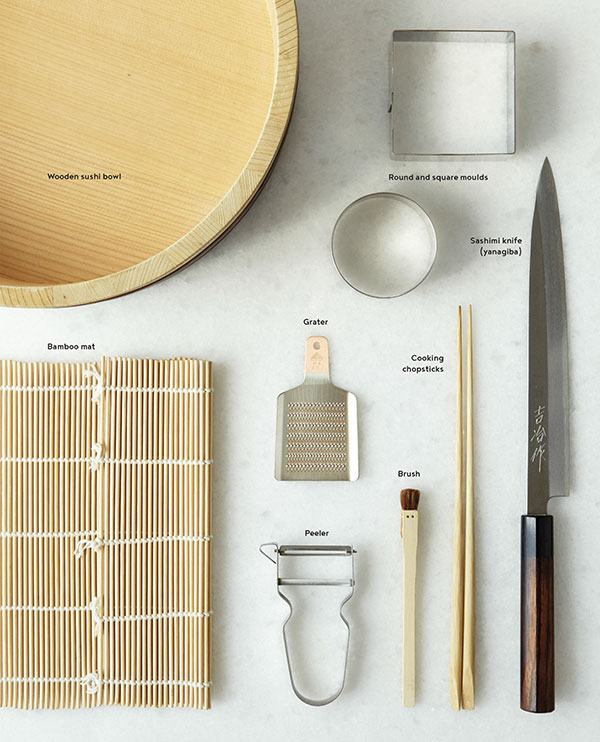

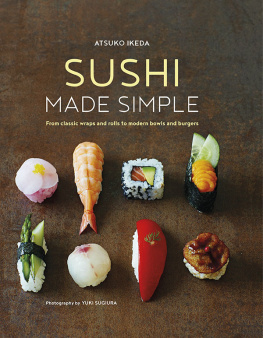
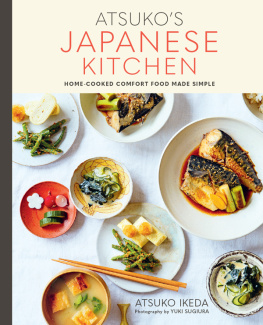
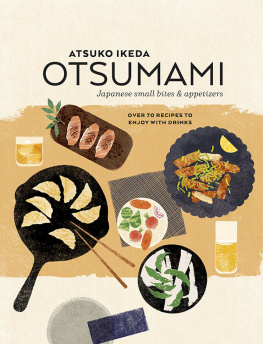
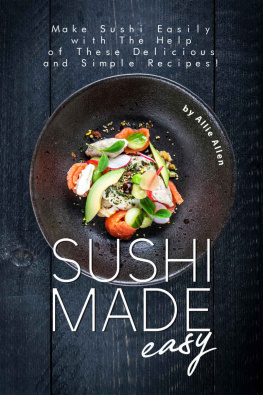
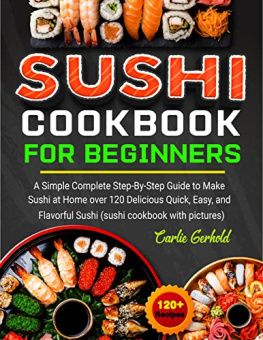

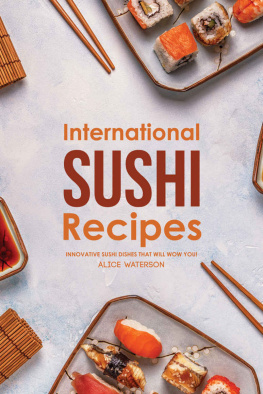
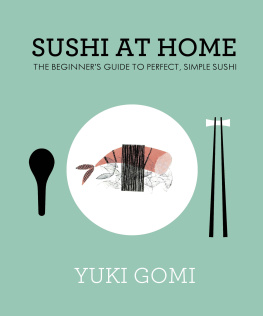
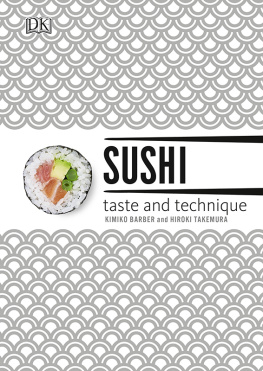


 ATSUKO IKEDA SUSHI MADE SIMPLE From classic wraps and rolls to modern bowls and burgers Photography by YUKI SUGIURA
ATSUKO IKEDA SUSHI MADE SIMPLE From classic wraps and rolls to modern bowls and burgers Photography by YUKI SUGIURA  CONTENTS
CONTENTS  With sushi restaurants opening and thriving in so many towns and cities, sushi has become an everyday food for many people. However, when you try to make something delicious at home that you have eaten in a restaurant, it can be difficult to work out how to do it properly and exactly which ingredients to use. With Sushi Made Simple you will learn just how to do this. In this, my first book, I would like to share with you the traditional skills of sushi-making, teach you authentic but modern recipes and explain some aspects of Japanese culture too. I have been teaching Japanese cookery lessons for almost 10 years in Atsukos Kitchen my cooking school in London and sushi-making has always been one of my most popular classes. One of the things that surprises my students the most is how versatile sushi is: it can be quick and easy and perfect for a lunchbox, or more meticulous and time-consuming for a special occasion.
With sushi restaurants opening and thriving in so many towns and cities, sushi has become an everyday food for many people. However, when you try to make something delicious at home that you have eaten in a restaurant, it can be difficult to work out how to do it properly and exactly which ingredients to use. With Sushi Made Simple you will learn just how to do this. In this, my first book, I would like to share with you the traditional skills of sushi-making, teach you authentic but modern recipes and explain some aspects of Japanese culture too. I have been teaching Japanese cookery lessons for almost 10 years in Atsukos Kitchen my cooking school in London and sushi-making has always been one of my most popular classes. One of the things that surprises my students the most is how versatile sushi is: it can be quick and easy and perfect for a lunchbox, or more meticulous and time-consuming for a special occasion. 
 THE THREE SUSHI PRINCIPLES Finding the golden balance is paramount in making any dish. With sushi, you can create endless variations by combining sushi rice with different sorts of toppings or fillings.
THE THREE SUSHI PRINCIPLES Finding the golden balance is paramount in making any dish. With sushi, you can create endless variations by combining sushi rice with different sorts of toppings or fillings.